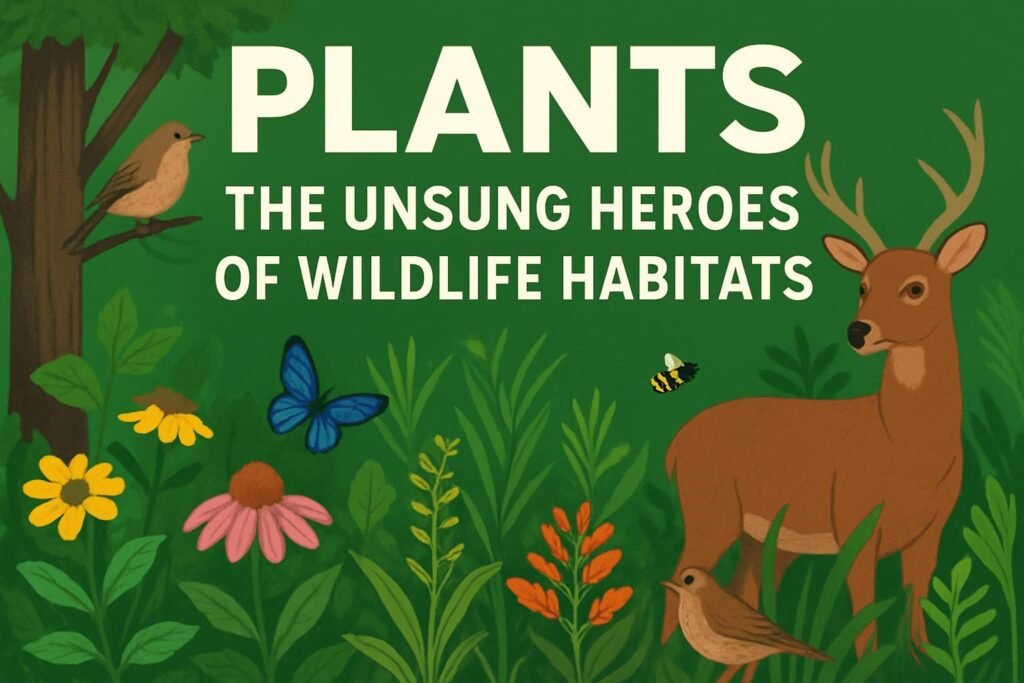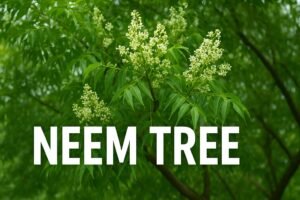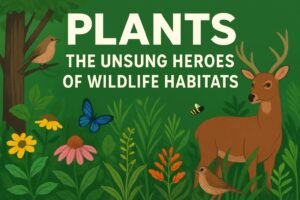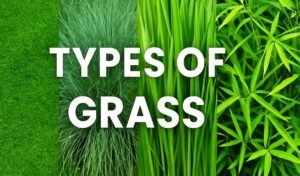The Unsung Heroes of Wildlife Habitats
Introduction
Plants are the foundation of every thriving ecosystem—they provide food, shelter, and the very oxygen we breathe. At Wildlife Nest, exploring how flora supports wildlife is vital for building awareness and appreciation for our natural world.

Why Plants Matter for Wildlife
- Food Sources Throughout the Year
- Trees & Shrubs: Oaks (acorns), serviceberries, persimmons, and sumac offer essential nourishment across seasons.
- Grasses & Aquatic Plants: Wild rice fuels waterfowl during migrations.
- Shelter & Nesting Spaces
- Dense shrubs and layered plant structures create safe havens for nesting and hiding Wikipedia.
- Ecosystem Resilience
- Native plants enhance biodiversity, reduce the need for water and pesticides, and stabilize soils.
Types of Wildlife-Friendly Plants
| Plant Type | Benefits for Wildlife |
|---|---|
| Trees (e.g., Oak, Hickory, Maple) | Provide nuts, seeds, buds, and nesting areas |
| Berry Shrubs (e.g., Serviceberry, Sumac, Huckleberry) | Berries support wildlife in spring through winter |
| Evergreens (e.g., Juniper) | Offer year-round food (berries) and cover |
| Aquatic Plants (Wild Rice) | Crucial for migratory waterfowl and wetland health |
Building a Layered Habitat
- Vertical Structure: Combine ground covers, herbaceous plants, shrubs, and trees to serve diverse species across heights Wikipedia.
- Horizontal Structure: Include transitional zones—from meadows to forest edges—to imitate natural ecosystems and support wildlife movement Wikipedia.
Applying This Knowledge Locally
- Start with Local Natives: No matter where you live, it’s important to prioritize plants that are native to your region, as they provide the best support for local wildlife.
- Seasonal Planning: Ensure year-round sustenance by combining early producers (like serviceberries), mid-season fruiting shrubs (like persimmons), and late-season staples (like sumac and juniper berries).
- Avoid Chemicals: Skip pesticides and fertilizers—their absence protects pollinators and fosters soil health.
Why Wildlife Gardens Matter
Adopting wildlife-friendly planting goes beyond aesthetics:
- Boosts Biodiversity: Native flora supports up to 70% more wildlife than non-native alternatives.
- Enhances Ecosystem Function: Improves soil health, aids pollination, and builds climate resistance.
- Promotes Well‑being: Spending time among wildlife-rich environments reduces stress and increases awareness and connection with nature Wikipedia.
Quick Implementation Guide
- Analyze Your Space: Note light, soil type, moisture—choose plants suited to those conditions.
- Layer Thoughtfully: Plant tall trees first, followed by shrubs and ground covers.
- Group Plants: Cluster plants that benefit similar species—provides habitat corridors and easier access for wildlife.
- Regular Maintenance: Water young plants, prune as needed, and observe which wildlife species are attracted to adjust accordingly.
Conclusion
Plants are silent champions of wildlife conservation. By planting with intention—choosing natives, layering thoughtfully, and maintaining with care—you can create a micro-ecosystem that supports biodiversity, enhances resilience, and resonates with the core mission of Wildlife Nest. Every twig, flower, and berry contributes to the vibrant tapestry of life.
Frequently Asked Questions (FAQ) About Plants and Wildlife
1. Why are plants important for wildlife?
Plants are essential for wildlife because they provide food, shelter, and breeding grounds. Trees, shrubs, grasses, and aquatic plants support birds, mammals, reptiles, insects, and many other species by offering fruits, seeds, nectar, and safe hiding places.
2. What types of plants attract the most wildlife?
Native plants attract the most wildlife because they have evolved alongside local species. Trees like oaks, berry-producing shrubs, flowering plants, and grasses are particularly attractive to birds, butterflies, bees, and small mammals.
3. What are native plants, and why should I grow them?
Native plants are species that naturally occur in a specific region without human introduction. They are well-adapted to the local climate and soil and provide the best food and shelter for native wildlife. Growing them supports biodiversity and reduces the need for pesticides and extra watering.
4. How do plants help birds?
Plants help birds in many ways:
- Trees provide nesting sites and cover.
- Flowers offer nectar to hummingbirds.
- Shrubs and grasses offer seeds and berries.
- Plants also attract insects, which are a vital food source for many bird species.
5. Can planting trees really improve wildlife conservation?
Yes. Planting trees restores natural habitats, increases biodiversity, prevents soil erosion, improves air quality, and offers safe zones for animals to nest and hunt. Reforestation efforts around the world prove how impactful tree planting can be for conservation.
6. Which plants are best for butterflies and bees?
Pollinator-friendly plants include:
- For butterflies: Milkweed, lantana, coneflower, zinnias, and butterfly bush.
- For bees: Lavender, basil, sunflowers, clover, and marigolds.
These plants produce nectar and pollen, the main food sources for pollinators.
7. Can I create a wildlife-friendly garden at home?
Absolutely! Even small spaces like balconies or backyards can support wildlife. By planting a mix of native flowers, shrubs, and trees, providing a water source, and avoiding chemicals, you can create a thriving mini-ecosystem.
8. What should I avoid when planting for wildlife?
- Avoid invasive species—they may harm local flora and fauna.
- Avoid chemical fertilizers and pesticides—they can poison beneficial insects and birds.
- Don’t overplant a single species—biodiversity is key to attracting different kinds of wildlife.
9. How do aquatic plants support wildlife?
Aquatic plants like wild rice, cattails, and water lilies provide food for birds and fish, oxygenate the water, reduce algae growth, and offer nesting areas for amphibians and insects.
10. Can plants help fight climate change?
Yes, plants absorb carbon dioxide (CO₂), a major greenhouse gas, and release oxygen. Forests and green cover act as carbon sinks, making them critical in climate regulation and sustainability.
Types of Grass – A Complete Guide
Butterfly Parks in India – A Colorful World of Wings
World Snake Day: Celebrating the Silent Guardians of Our Ecosystem


